The 100 years of Banque Delubac & Cie
To celebrate the 100th anniversary of its creation, Banque Delubac & Cie is launching an original series in 6 episodes from 1924 to nowadays, interweaving the events of the establishment’s construction at the heart of the economic, societal and artistic context that marked the 20th and 21ste centuries.
The 1920s-1930s
FREEDOM, LIQUIDITY, TENACITY
Maurice Delubac:
A pragmatic and wise founde
The first stones of this story were laid just over a century ago. It is the portrait of a discreet visionary and the beginnings of a centuries-old work. It embodies a certain idea of French banking: rooted and innovative, resilient and daring, ambitious but flourishing far from the major international financial centers…
The story begins in the early days of 1924. The Roaring Twenties are in full swing. Surrealism is asserting itself. Paris is the capital of the art world. Painters, sculptors, musicians and poets illuminate this period with their talents, their visions and their extravagances. In the Ardèche, in the commune of Le Cheylard, there were few echoes of this effervescence.
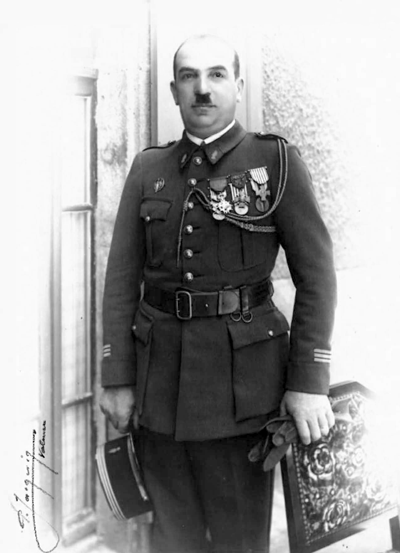
Maurice Delubac
Photo library Banque Delubac & Cie
Maurice Delubac did not frequent the cafés and studios of Montparnasse. Nor was he a regular at the “corbeille” with its busy stockbrokers and intermediaries, or familiar with Wall Street or the City of London. He lives and works in Ardèche. He was born into a farming family in Saint-Etienne-de-Boulogne, near Aubenas, in 1893, the same year as painters Soutine and Miro.

The apprenticeship years
Mobilized in 1914, he survived the fighting of the Great War, ending it with the rank of lieutenant. Returning home to civilian life, he joined a bank in Aubenas, at around the same time as a certain Jean Giono, a bank employee before becoming a writer, was working at the Comptoir National d’Escompte de Paris (in Manosque).
This is the ‘Banque Privée’ that Maurice Delubac has integrated in Aubenas. Its head office was in Lyons, but it wanted to open an office in Le Cheylard, for which it would be responsible. It was a formative experience, and one that heralded a new challenge when the Banque Privée decided to close its Cheylard branch. Maurice Delubac has built up a solid network and has won over his customers. Convinced of the economic potential of the area, he decided to set up his own, with the support of local industrialists keen to have a local bank.
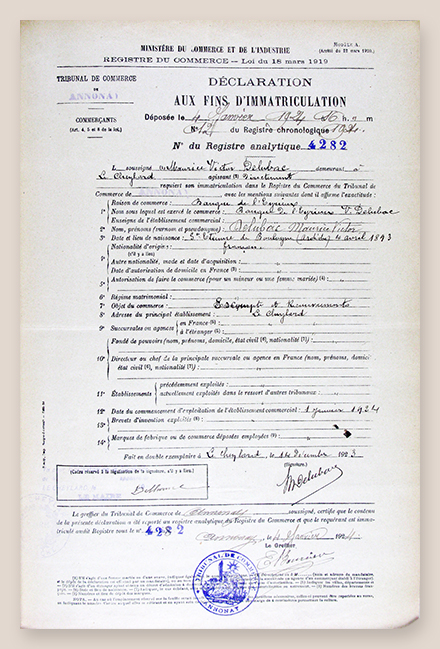
Declaration of registration with the Trade Register of Delubac Bank in 1924
On January 2, 1924, he filed his articles of association. To open a bank, all you had to do was register with the Registre du Commerce. A wind of freedom blew over the banking sector; the profession was still largely unregulated. France has almost 2,000 banks, many of them local or regional.
Banque de l’Eyrieux Maurice Delubac (named after the river that flows through Le Cheylard) was founded in the New Year, in the run-up to the first-ever Winter Olympics, to be held in Chamonix from January 25, prior to the Summer Games in Paris. The company was set up as a ‘personal business’, a legal form it retained until 1976. Its beginnings reflect this period of “banking craftsmanship”. First address: on the first floor of a small building in Le Cheylard, where the first floor was occupied by… a café! Two years later, the bank moved into larger premises. It remained there until 1946. It was followed by a delicatessen and then a patisserie!
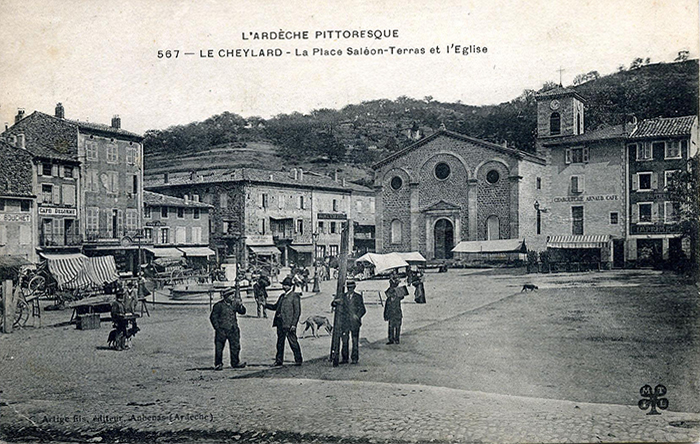
The Saléon-Terras square and the church of the village Le Cheylard, Ardèche, in the early 1920s.
Departmental Archives of Ardèche, 79Fi_485.
It’s the France of yesteryear, rural, but also won over by the spirit of enterprise combined with good farming sense, at the antipodes of the senseless speculation and risky stock-market schemes that punctuate the international economic chronicle. Maurice Delubac sketches out a cautious banking genesis, aimed at a clientele made up essentially of industrialists, craftsmen and shopkeepers in and around Cheylard, where the tanning and weaving sectors are particularly dynamic.
Maurice Delubac does a lot of securities banking: investments, coupon redemption. He is also a general insurance agent for the Union group, a very old company and distant “ancestor” of the AXA group.
Practical wisdom from a bank founder
He diversifies. He loves his job, his customers, his territory. He’s a simple man, always available. His motto? “Don’t live beyond your means, or even according to your means, but below your means”. It’s a wisdom that has seen his bank through crises, crashes and the test of time. His rule of conduct? Always liquidity. Equity is a guarantee of survival, development and freedom. Hence an atavistic conviction that is still the golden rule of Banque Delubac: liquidity above all.
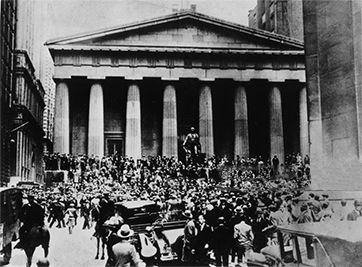
Bourse de New-York, pendant la crise de 1929.
Getty Images
The crisis of 1929 is over. So have the various threats to the franc, which had led to the currency’s devaluation. The Great Depression swept Europe after America, ushering in years of deflation, unemployment and uncertainty. But liquidity was preserved and Banque Delubac remained standing, already proving its resilience and adaptability at a time when so many small regional banks, and even much larger ones, were closing down or being taken over.
The 1930s brought social hope, notably under the Front Populaire, but also economic and political threats and new paradigms, such as the first nationalizations and the beginnings of state control over credit. It was also a period of great richness for economic thought, which underwent profound renewal while exerting a growing influence on government economic policies.
At the end of the decade, another crisis of even more dramatic proportions struck: the Second World War. Maurice Delubac is mobilized again. He is forty-six years old.
A golden age… for gold
The interwar period was a golden age for the precious metal. The gold standard, suspended during the Great War, was reinstated in the 1920s. In 1925, Great Britain reinstated the free convertibility of the pound sterling, followed by France in 1928. The dollar, which was also convertible, had already established itself as a benchmark currency. Gold governed the international monetary system, but it also represented a tremendous source of inspiration for the arts and letters. The year 1925 was a case in point, with Chaplin’s The Gold Rush, Blaise Cendrars’ L’or and Gide’s Les Faux-monnayeurs… where all that glitters is not gold.
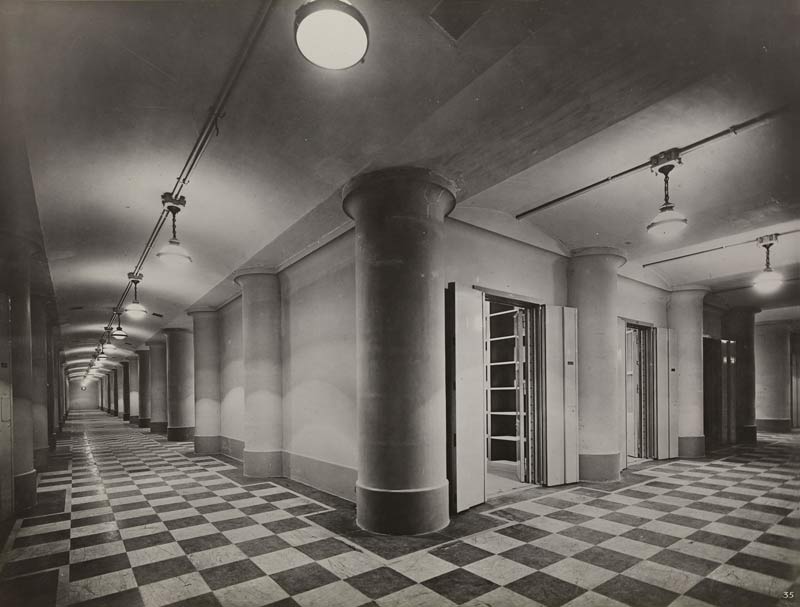
Group of strong rooms, underground room of the Bank of France, Anonymous, 20th century.
In the early 1930s, Stefan Zweig published a dazzling account of the Banque de France’s gold stored in a huge, ultra-secure underground vault, built the same year Maurice Delubac founded his bank. But what to do in the event of defeat and invasion? An evacuation plan was drawn up in the summer of 1939 and activated during the French campaign. Via the ports of Toulon, Brest and Lorient, France’s 2,500 tons of gold headed for the colonial empire (Dakar), the New World and Martinique on an incredible odyssey of over 8,000 kilometers. A treasure recovered at the Liberation, give or take a few crates of bullion!
What will become of the bank – and its founder
– in such a threatening context?
To be discovered very soon in:
RESISTANCE AND RESILIENCE
